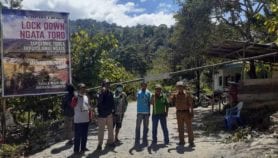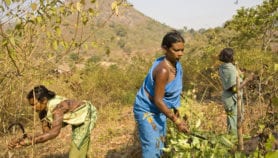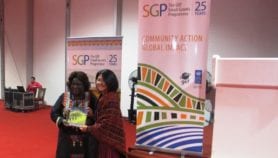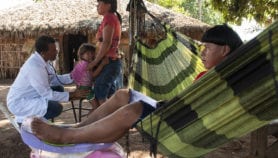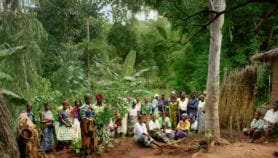Send to a friend
The details you provide on this page will not be used to send unsolicited email, and will not be sold to a 3rd party. See privacy policy.
[CAPE TOWN] Ever tried samp, African ground nuts, mealies or sorghum? Or, if you have, how about potele, isithwalaphishi, ditlhakwana, mutuku or inkobe?
These are some of the indigenous foodstuffs featured in a cookbook that has been compiled in South Africa as part of the department of science and technology’s (DST) ‘indigenous food poverty alleviation project’.
Among the recipes are morogo (an indigenous green leafy vegetable), semphemphe (wild melon pudding) and masonja (a dish featuring mopani worms and ground peanuts).
The project, which is being undertaken by the Council for Scientific and Industrial Research (CSIR), aims to find ways of marketing indigenous foods.
The cookbook, an unintended output of the project, brings together about 80 recipes from rural areas of five of South Africa’s nine provinces — Free State, KwaZulu-Natal, North West, Limpopo and Eastern Cape. Many are generations old, and form part of the traditional knowledge of these communities.
Isaac Lusunzi, general manager of technology for poverty reduction in the DST, explains that the aim of the project is to find ways of using indigenous knowledge to help communities generate income.
Since 2000, more than 12.3 million rand (US$1.8 million) has been put into the project, which seeks to set up small businesses and develop the technologies needed to produce indigenous foods in significant quantities.
The recipe book was an unintended output, notes Lusunzi. “With the [South African] presidential inauguration in April, it was decided to produce a memento of the country for guests, and thus the book was born.”
Nelson Mampuru, who manages part of CSIR’s technology for development programme, says that the project was initiated in the most needy parts of the country, and that the organisation consulted extensively in the rural communities to collect indigenous recipes. These then formed the basis for selecting indigenous foods with commercial potential.
Mampuru says that processing centres are currently being established in the five provinces in which the foodstuffs will be produced. Other companies will supply ready-made products.
“With four processing centres in three of the provinces, and others to open shortly, these foods are starting to appear in the local market,” says Mampuru.




